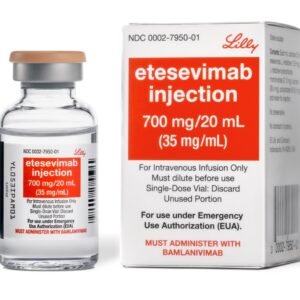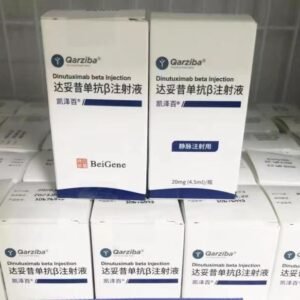Nimotuzumab Injection
Function and indication: This product is used in combination with radiotherapy to treat stage III/IV nasopharyngeal carcinoma with positive expression of epidermal growth factor receptor (EGFR).
Adverse reactions:
In the clinical study of advanced nasopharyngeal carcinoma in Chinese, the adverse reactions of this drug mainly manifested as mild fever, decreased blood pressure, nausea, dizziness, and rash. Among the 70 patients with advanced nasopharyngeal carcinoma in the trial group, it was found that the incidence of grade I fever was 4.28%, with the highest body temperature of 39°C, which was relieved after symptomatic treatment and did not affect the treatment; the incidence of grade I blood pressure drop and dizziness was 2.86%, with the lowest being 80/50 mmHg, which was relieved after rest and did not affect the treatment; the incidence of grade I nausea was 1.43%, which could be relieved by itself and did not affect the treatment; the incidence of grade I rash was 1.43%, which could be relieved by itself and did not affect the treatment. The adverse reactions associated with the use of recombinant humanized anti-human epidermal growth factor receptor monoclonal antibodies in clinical trials conducted in Cuba and other countries are described as follows: The drug has been used alone to treat advanced epithelial tumors in various parts of the body (including breast, lung, ovary, stomach and kidney) and in combination with radiotherapy for the treatment of head and neck tumors. In each treatment group, the dose range of the monoclonal antibody was 100-400 mg, used single or multiple times, and the number of medications was 1-6 times, of which 86.5% of the patients were treated 6 times during the 6-week treatment period. The average age of the patients was 55 years (20-75 years), with 57 males and 32 females, for a total of 89 cases. The adverse reactions reported were drug-related reactions that occurred in evaluable clinically enrolled patients. Adverse reactions are divided into common and rare adverse reactions, and the specific incidence is detailed in the table below. Among the adverse reactions related to the drug, grade I and II adverse reactions accounted for the majority. No reports of rash and other skin toxicity were found.
Contraindications:
It is contraindicated for patients who are allergic to this drug or any component of the drug.
Share:
Products
Our offers
Health Classification
Let us work together to protect precious health



























